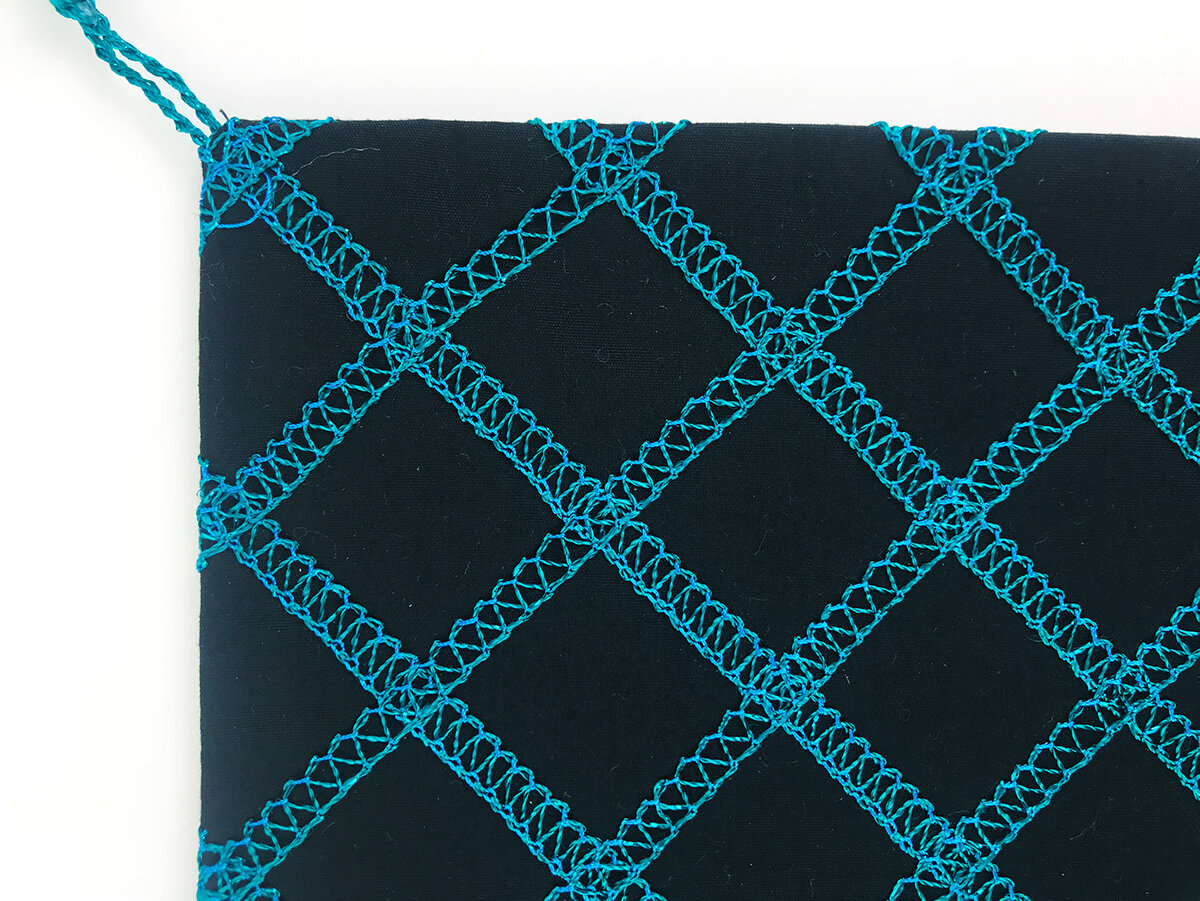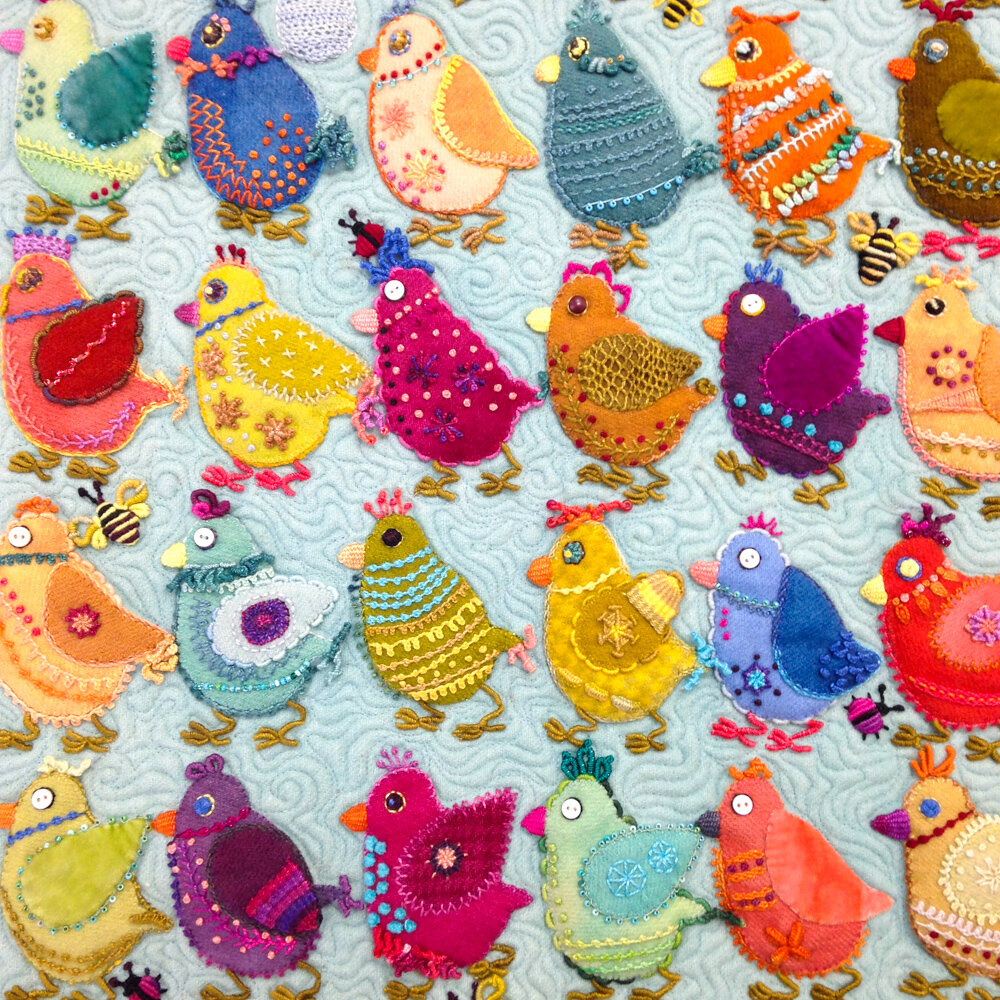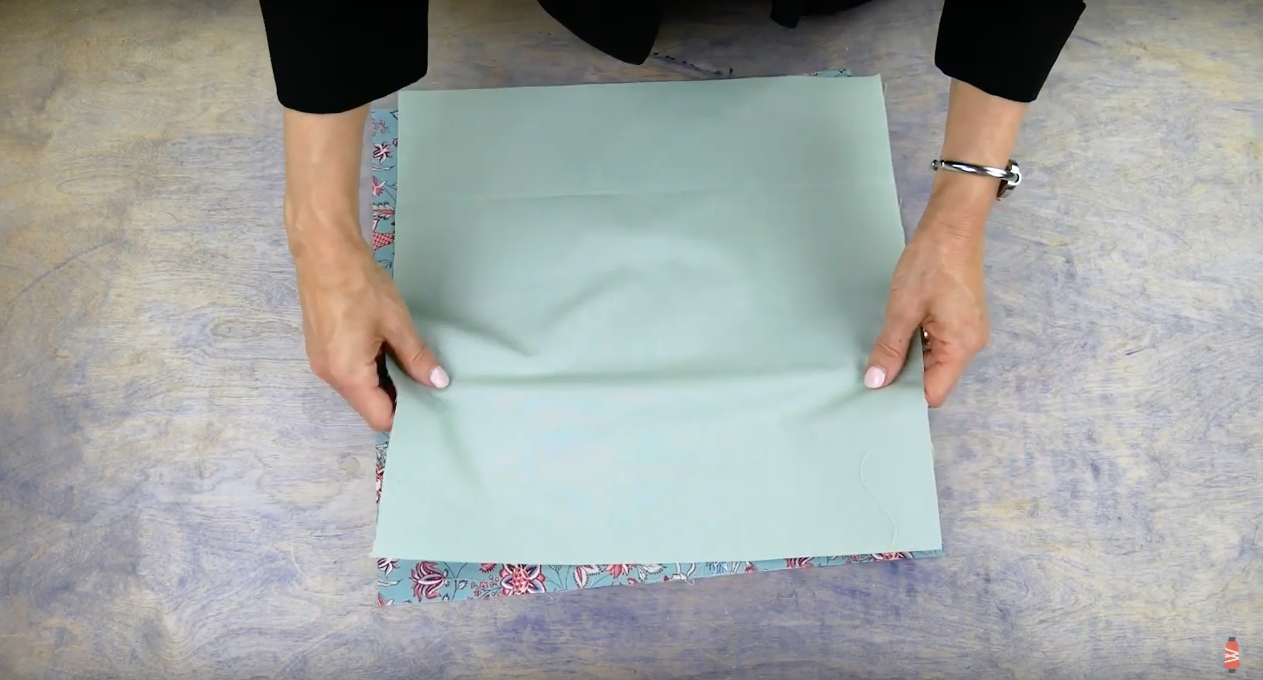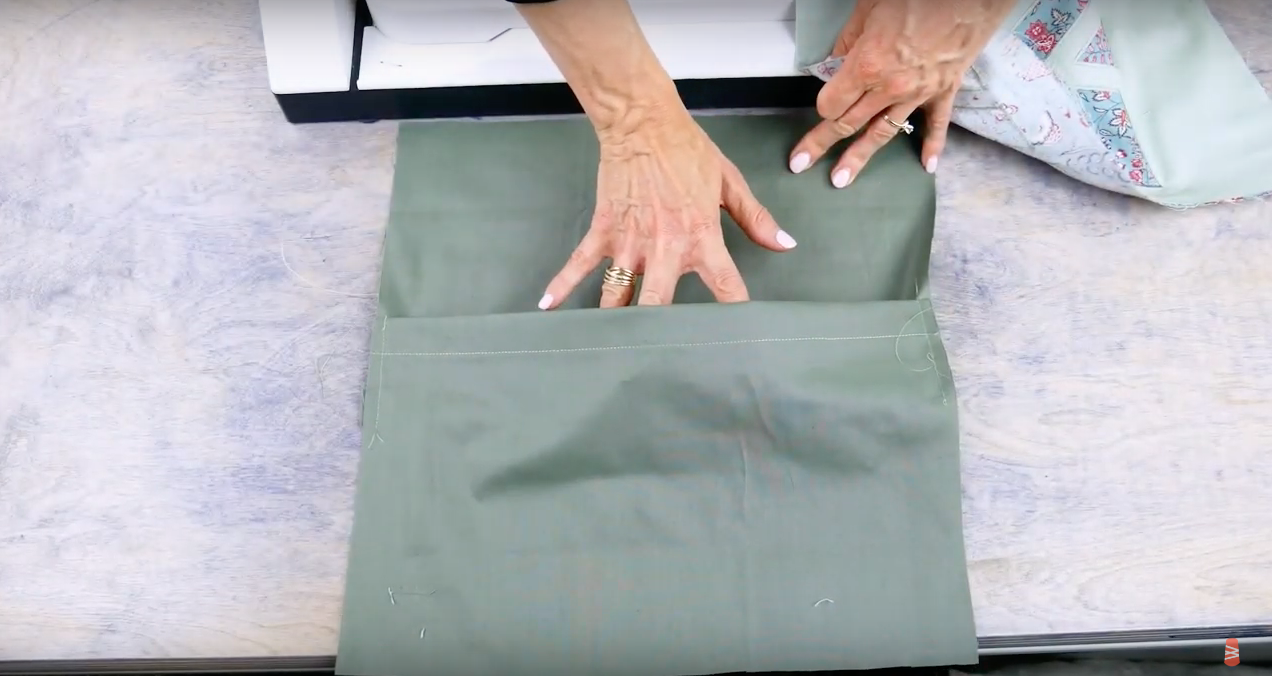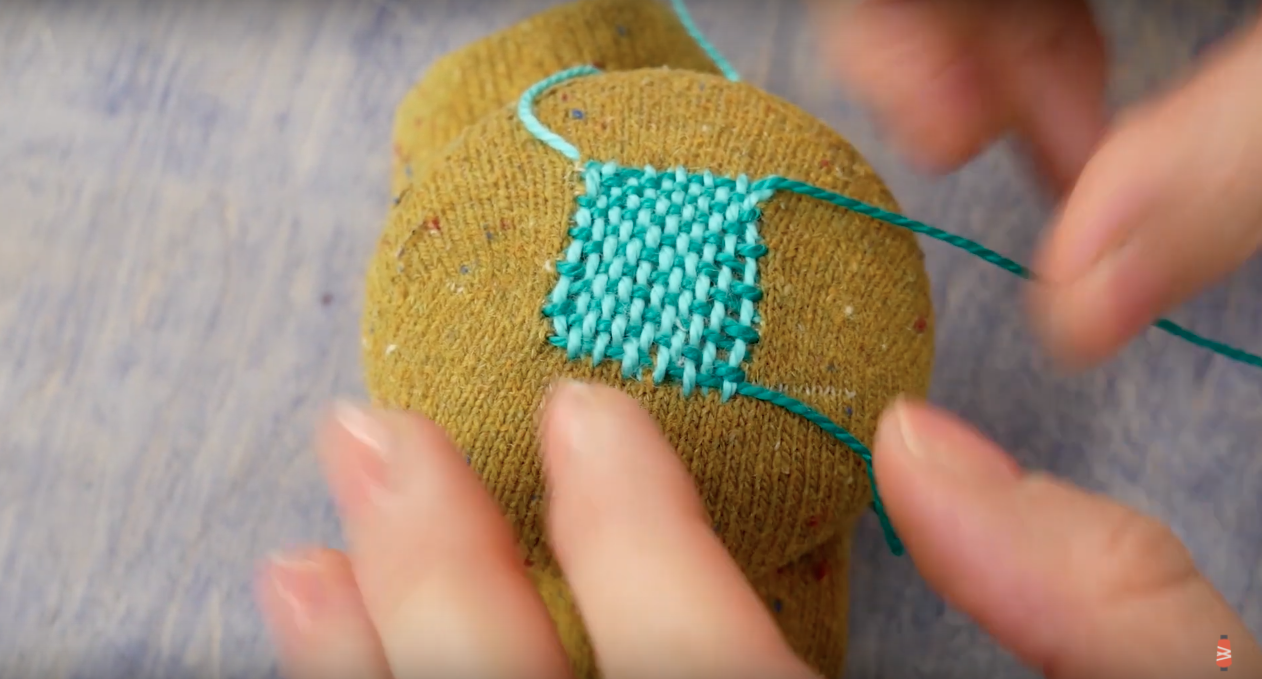How to Successfully Sew With Heavy 12wt Threads
Maura Kang
12wt thread is actually the thickest thread you can safely fit through the eye of your machine needle and can be absolutely stunning to use in any project. These bold stitches are perfect for eye catching designs, accents, and quilting that can really change the look of your sewing. However, since most sewing machines are calibrated for medium 50-40wt threads, sometimes you’ll need to make a few adjustments so you can sew with these thick threads.
You may not need to follow everything on our list to sew successfully with 12wt, in fact your thread will probably sew beautifully without much trouble. We’ve just compiled a list of helpful tips to help those who run into trouble, as well as easy adjustments to help your 12wt thread run through the machine smoothly.
Needles
The first and most important thing you’ll need to do is change the needle. If you’re using a 12wt thread in 100% cotton or rayon, we recommend a size 90/14 or 100/16 topstitch needle. If you’re using a specialty thread such as GlaMore™, a 12wt rayon that has a strand of metallic running through it, you can even use a 100/16 or 110/18 topstitch needle. Because of the metallic in the thread, having even more space in the eye of the needle for the thread to move around in will greatly reduce shredding and breakage problems.
We recommend using topstitch needles for heavier threads as they have a larger size eye and a deeper groove along the needle shaft. This helps the thread to sew more smoothly and reduce shredding.
An alternative to topstitch needles are super non-stick needles. If you’re sewing with 12wt thread through a layer of fusible, these needles will greatly reduce friction and help the thread glide through the material, which will also do a lot to prevent shredding and breakage issues.
Tension
Depending on your machine, you may also need to lower or increase the top tension slightly. Lowering the tension means to loosen it, and increasing the tension means to tighten it. It might be intuitive to lower the tension as the thread is thicker, and in some cases this will be true. However, we find that on other machines, you’ll actually need to tighten the tension for these thicker threads. The only way you’ll be able to tell which direction to go is to sew a test strip on a scrap piece of fabric.
You can tell if the tension is too tight if the bobbin thread is pulling through to the top. Alternatively, if you’ve loosened your tension too much, then your top thread will pull through to the bottom. A perfect stitch will have the top and bobbin threads nested in the center, between the fabric layers. You may also end up with a bird’s nest of thread on the bottom if the tension is set too tightly.
What you put in your bobbin will greatly impact your stitch quality and seam bulk. We always recommend pairing your 12wt top thread with a super fine bobbin thread. This is DecoBob™, an 80wt cottonized polyester thread that we recommend as your primary bobbin thread. You can see that this thread is a lot thinner than the 12wt. If you were to sew with 12wt in your bobbin as well as in the top, you’ll find that your seams will be very bulky and won’t look good. Your machine may also struggle to run both of these large threads, increasing the likelihood of shredding, and your stitch quality could also suffer.
Putting this thinner thread in the bobbin will help keep your seams flatter, reduce tension problems, and keep your stitch quality looking beautiful.
If do plan on using 12wt thread in the bobbin, such as for bobbin work, take extra precautions. All bobbin cases come calibrated for 40 – 60wt threads, so if you put a 12wt thread in there, the thread will be thicker than what the tensions are set for. It will be difficult to change the settings perfectly back to where they are set for medium weight threads, so we recommend purchasing an extra bobbin case where you can play with the tension settings.
You’ll want to loosen the tension slightly so the thread lays flat like its supposed to. Otherwise the stitches can look very tight, or you’ll pull the thread from the bottom to the top, or even pull the thread from the top to the bottom. Check out our video on changing bobbin case tensions to learn how to do this for yourself.
Stack Wound vs Cross Wound Thread
Check the direction your spool of thread is wound. All 12wt threads from WonderFil will look like this, which is referred to as cross wound thread. Other companies might wind their thread in a straight direction called stack wound thread. The general rule of thumb is that stack wound threads should go on your vertical spool pin, while cross wound threads should be used on the horizontal spool pin.
The reason for this is the direction the thread comes off the spool depending on how its wound. If you were to put the cross wound thread on the vertical pin, you can see that the thread drags coming off the side of spool. This adds an extra inconsistent tension to the thread, which will impact the stitch quality. When you place the same spool on the horizontal pin, you can see the thread draws from the top of the spool in a smooth motion with no extra pull.
Stitch Length
We suggest lengthening your stitch length to 2.5 – 3 to help reduce the density of the stitches. Because the thread is thicker, it will look dense with a regular stitch length. Increasing the stitch length will make it look more like a normal stitch. Keep in mind your normal stitch length is usually set at around 2.
Here’s some issues that might come up, and how to resolve them:
If you find the thread is shredding, it can be caused by a few different things. One reason could be the needle is too small. Too small of an eye, or the needle shaft not being thick enough, will cause a lot of friction on the thread which can lead to shredding and breakages.
A needle that is too small can also cause the thread to ball up and turn into a bird nest.
Another reason you might experience thread breaks could simply be that you’re sewing too fast. Slow the speed on your machine. This will also give the thread a chance to lay down smoothly in the stitches. Slowing down is especially important for decorative stitches because of the density of the thread.
Your top tension may also be too tight or too loose. If it is, this can lead to thread breaks and the bobbin pulling up through the fabric, or the top thread pulling under the fabric. Play with your top tension settings on a scrap fabric until you find the ideal setting for your machine.
Keep in mind that not all of these problems will come up when sewing with 12wt threads. As every machine is different, you’ll find that in most cases, the thread will sew beautifully with minimal adjustments. This is just a comprehensive list of everything that could happen, and how to solve them in case they come up.
What Kind of 12wt Threads Are There?
12wt threads can be used for all kinds of beautiful, bold stitching. It’s perfect for adding textural effects as you can see in this thread painting done with a 12wt Egyptian cotton called Spagetti™. Cotton gives you a beautiful matte finish paired with the natural look and texture of cotton. Because we used the thicker 12wt thread, you can see the thread stands out from the fabric, making it ideal for bold designs that you can touch.
You’ll also find 12wt threads in rayon, such as this 100% rayon thread called Accent™. Rayon is a smooth, soft, and glossy material with a lot of shine. We love using it for decorative designs and highlighting because of its light reflecting properties.
Some other fun 12wt specialty threads can be used, such as this rayon and metallic thread called GlaMore™. GlaMore™ has a strand of metallic running through it, giving it the gloss and soft finish of the rayon mixed with the eye-catching sparkle of metallic. These are the threads you want to make an impact with your stitching!
Consider using 12wt thread for any decorative machine stitching, bobbin work, couching, machine appliqué, machine quilting and big stitch hand quilting, or even run it through the loopers on your serger for decorative edging effects. These threads can give you a look you can’t achieve with regular medium weight threads, so don’t be afraid to experiment outside the thread box!
Have you used 12wt threads in your sewing machine? Let us know if you still have questions about these threads, or tell us where you love to use them. Ready to start sewing? You can find a list of stores that carry these threads on www.shopwonderfil.com/shop-local/.















































































































































